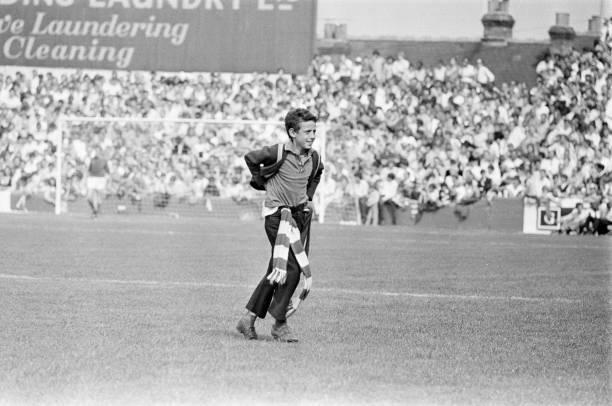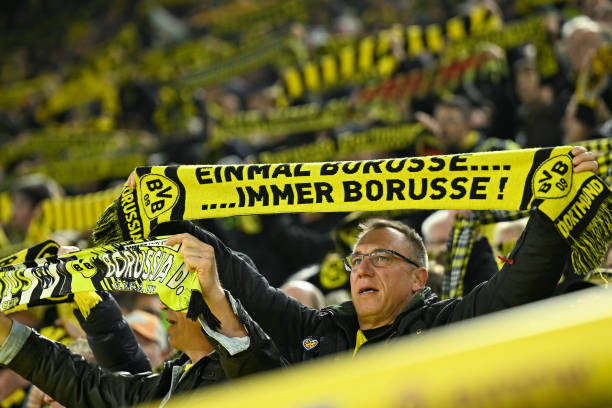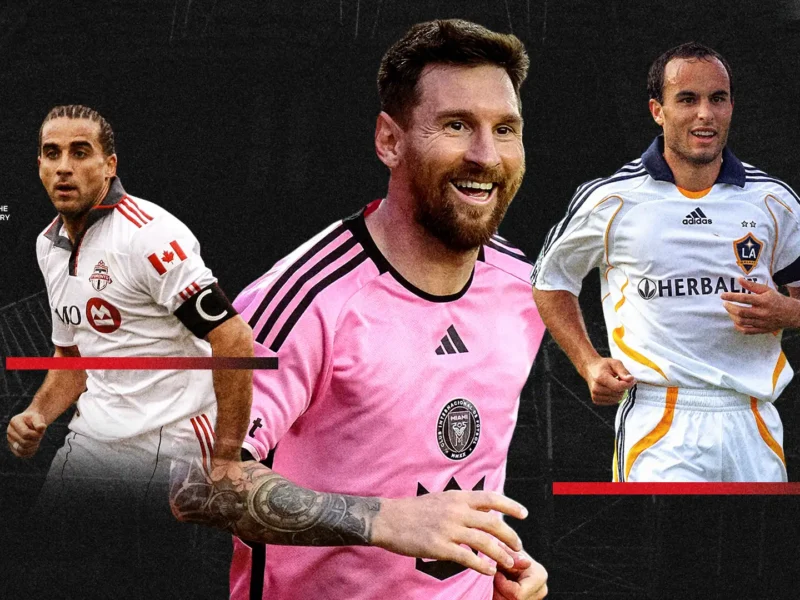If you are anything like me, you live and breathe soccer. Whether it is watching the Premier League on a chilly Saturday afternoon or catching a midweek Champions League match, there is just something magical about the game.
And if you’ve been paying attention to the stands, you’ve probably noticed an accessory that’s become synonymous with the sport – scarves.
I mean those colored, team-branded scarves that somehow manage to be waved in a proudly unified manner by their fans, creating a rather magical sea of colors in sight.
Why scarves? Why not hats or gloves or something?
The simple piece of cloth contains within it decades of tradition, rich cultural significance, and even a smidgen of history that shall be worth diving into.
So let’s unravel this yarn, shall we?
Why Do Soccer Fans Wear Scarves?

Soccer scarves had, originally, a very practical purpose. In the early 20th century England, when the roots of the sport go deep, fans would collect on chilly, wet winter evenings and stand shoulder-to-shoulder on terraces.
Back then, central heating wasn’t just something that existed, and matches never stopped on account of a little frostbite.
It was necessary for a scarf, mainly because fans needed a way to stay warm while still showing their support for their beloved teams.
These scarves weren’t just any scarves; they were knitted in the colors of the teams, allowing fans to both ward off the chill and show their allegiance.
Like killing two birds with one stone, but way cozier. And unlike hats, which might obscure a fan’s face, or gloves, which are less visible, scarves offered a bold and unmistakable way to show team pride.
The Birth of a Tradition

The origins of the soccer scarf are a little hazy, but most people believe that scarves first showed up in England in the early 20th century.
At first, fans waved simple ribbons or white handkerchiefs to demonstrate their support. But as clubs began adopting fixed colors for their kits, supporters followed suit, wanting to align themselves visibly with their teams.
One of the earliest recorded uses of a soccer scarf was in 1934, during an Arsenal vs. Crystal Palace match at Highbury. An isolated fan was seen on television with a striped scarf of red and black. From there, it took off.
Originally, they were knitted by family members, often the job of grandmothers, which gave them the popular nickname “granny’s scarves.”
By the time World War II was over, scarves had become commonplace in the stands, with mass production making them accessible in the post-war era to anybody.
Quickly, clubs, not missing a trick, started creating official scarves-an entirely new line of revenue. A fashion statement, thus, was born.
CHECK OUT | Top Winter Soccer Training Options to Stay Competitive and Build Your Skills
More Than Just Warmth

While scarves initially started off as practical accessories, they soon became so much more. They became emblems of allegiance and identity.
When you don a scarf with your team’s colors or crest on it, you’re almost saying, “This is my team. These are my people.”
Soccer is not just a sport; it’s a culture, a lifestyle.
For many fans, it’s more than just watching games: It’s being part of a community that shares your passion.
The second you walk into a stadium, scarf draped around your neck, you’re immediately connected to thousands of others who feel the same joy, heartbreak, and pride that you do.
Have you ever seen those pre-game displays where the fans hold their scarves aloft, creating a colorful display while singing their team’s anthem? It is a spine-tingling sight.
Take Liverpool’s Anfield, for instance; the waving of scarves during You’ll Never Walk Alone is tradition. It’s not just a performance; it’s an emotional expression of unity.
The Evolution of Soccer Scarves
Early on, scarves were pretty basic: stripes in the team’s colors. But as technology and design capabilities improved, they became more intricate. Modern scarves now feature team crests, slogans, and even players’ faces.
Some are commemorative, marking specific games, championships, or milestones. Others are “half-and-half” scarves, combining the colors and crests of two teams playing a match.
These are particularly popular among neutral fans or those attending a game as a once-in-a-lifetime experience.
That said, half-and-half scarves are divisive. Many die-hard fans view them as sacrilegious. After all, why would you want your team’s colors sharing space with a rival’s? But for casual fans or tourists, they’re a fun way to remember the occasion.
CHECK OUT | 7 Proven Ways to Get Recruited for College Soccer from High School
Scarves Global Influence
While the soccer scarf originated in England, its appeal quickly spread worldwide. Let’s take a quick tour of how scarves are celebrated across the globe:
- Germany: Borussia Dortmund’s “Yellow Wall” in the Westfalenstadion is a thing to behold. Thousands of fans raise yellow-and-black scarves in a daunting wall of support for their team.
- Scotland: During the fierce Celtic vs. Rangers rivalry, scarves hold even more meaning, symbolizing not only team loyalty but also deep-seated cultural and political identities.

- MLS (USA): In North America, soccer scarves have become a defining feature of supporter culture. When Seattle Sounders joined MLS, they issued scarves to all season ticket holders, sparking a trend across the league. Today, scarves are as much a part of the American soccer experience as chants and banners.
- Australia: When Liverpool visited Melbourne in 2013, 85,000 fans at the MCG sang You’ll Never Walk Alone, many holding scarves. Most had never set foot in Merseyside, but the scarves created a palpable connection.
CHECK OUT | How to Become a Soccer Scout: Your Ultimate Guide to a Dream Career
The Role of Scarves in the Modern Game
The soccer scarf has transcended its utilitarian roots to become collectible, fashion, and even an implement of activism. Many clubs use scarves for fundraising for charitable causes or to commemorate a certain event.
For instance, limited-edition scarves are often sold to support disaster relief or for some form of social justice.
And, of course, there is a commercial perspective: scarves are a big business.
In Major League Soccer alone, scarves represent about 10% of total merchandise sales. But unofficially, outside official stores and websites, there is also a huge black market of fake scarves-only further evidence of just how strong demand is.
Summer Scarves? Absolutely!
You might think these are for cold weather alone, but modern soccer scarves are made from lightweight material and can be worn comfortably throughout the year.
And who says you have to tie it around your neck?
Many fans tie it around their wrists as a kind of badge of honor signaling their commitment to the team.
To the ultras, or hardcore fans who follow their team no matter what, a scarf isn’t an accessory but one for absolute loyalty.
It is there when it is 90 degrees in the middle of summer, and it’s cold in December. It is not about being practical; it’s about pride.
CHECK OUT | Soccer Club Fees: What Parents Need to Know Before Signing Up
Wrapping up: Why Scarves Matter
On first look, a soccer scarf may appear to be just a simple piece of fabric. It is much more than that: a link with the past, a tie with fellow fans, and a sign of devotion to the beautiful game.



